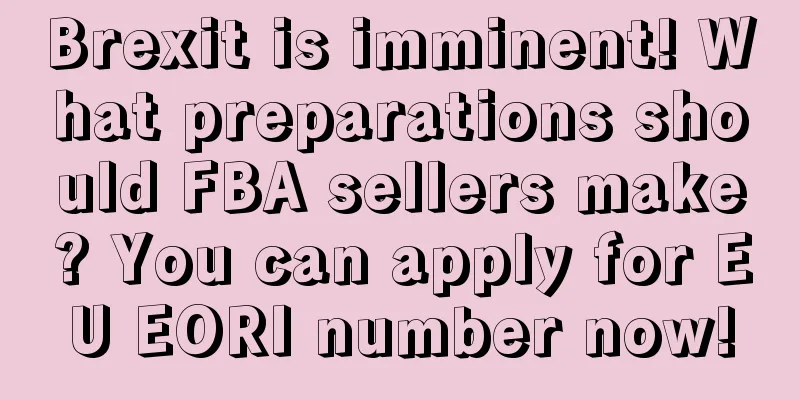As an Amazon boutique company, how can we make good pictures?
I believe that it is difficult for most companies to achieve verticality in every category, so they will encounter a problem: should they directly give the product to the artist and let him/her play freely, or should the sales department produce a picture copy to guide the art team?
If the categories can be made very vertical, then the art team can naturally take the lead. Our plan is to let the sales department write a copy to guide the art team to draw pictures. The more detailed the better. The copy must be confirmed by the superiors. Only then will it be submitted to the art team for drawing. Next, I will share in detail how we did it.
1. Preparation before making picture copy
Sales must have a comprehensive and detailed understanding of the product (parameters, functions):
2. Preparation before making picture copy
Analyze consumer psychology and find out what consumers care about most (focus on the key points):
3. Preparation before making picture copy
Write our picture based on the picture framework and combining the first and second points
The copywriting must ensure the final presentation effect of the picture.
2. How to write a picture frame
Main image
Product function summary diagram
Product details display (2-3 pictures)
Usage scenarios/instructions (1-2 photos)
Experience scene display (1 photo)
A+ (one piece)
A+ detail display pictures (4-6 pictures)
The basic drawing principles of the main picture:
The product must occupy more than 85% of the image area. Size requirement: 1500*1500
Comply with Amazon's image requirements as much as possible and do not violate any regulations;
Choose multiple angles. It is recommended to choose 1-2 pictures. The angle of placement must be comfortable.
The product display cannot be too rigid. You can refer to your competitors and then make breakthroughs in color and matching to stand out.
Common main picture display:
Product function summary diagram:
Purpose of drawing:
Let customers fully understand your product at a glance;
Avoid complaints from customers after receiving the goods.
Drawing principles:
The functions/features to be displayed must be very important. Do not display irrelevant ones.
You must have a clear product positioning/consumer positioning, and decide which features you want to display based on your product positioning.
Common summary chart display:
Product details display picture
What is a detail display picture: It not only means the details of the product's appearance, it also includes the product's functional details (what functions it has), what differentiation it has, and how to use the product, all of which fall within the scope of detail display.
Principles for drawing product details:
We must stand in the customer's perspective - we express what the customer cares about;
Customers care a lot about the texture of the product, so it is important for us to show that we have good texture. Customers care a lot about a certain function, so we must show this function clearly and vividly. So when showing details, you must ask yourself, what do my customers care about, and does my drawing satisfy what they care about?
The display must be logical - the picture must have clear organization and logic, even if there is no prominent text in the picture, the customer should be able to understand your picture.
Break out of the box given to you by your competitors - we can learn from the good things that competitors do, but we must also question the things they do not do well. We should add their good points to our own breakthroughs to make them better, rather than just doing what our competitors do. We must take the essence and discard the dross.
What can product details display show?
Summary of product appearance details
Key product features (what customers care about most)
Product differentiation
Product Instructions
Note: Please selectively display according to the actual needs of consumers and the characteristics of the products. Not all products need to display all the above details!!!
Example of appearance details:
Key function display example:
Differentiated display examples:
Example of using details:
Usage scenario display diagram:
Purpose of drawing:
Give the product accurate scene positioning to attract the attention of precise customers
Guide consumers to understand your products in the direction you want
Drawing principles:
Combine product positioning labels with our user portraits;
Avoid displaying things that are too Chinese.
The product should appear in the scene as much as possible.
Example of usage scenarios: Try to find as many different usage scenarios as possible to show that the product has a wide range of usage scenarios.
Experience scene display picture:
Purpose of drawing:
Demonstrate the pleasant effects that people can achieve when using the product, thereby attracting customers;
Guide consumers to better understand your products.
Drawing principles:
Combine product positioning labels with our user portraits;
Avoid displaying things that are too Chinese.
The product should appear in the scene as much as possible
Example of experience scene display:
Product A+ main image:
Purpose of drawing:
It is the core of the entire set of A+ pictures, which can summarize the highlights of your product and the product effects you most want to show;
Can strengthen your brand effect
Drawing requirements:
Size: 970*600 or 970*300
Include the scene, product, and your brand. The brand should be eye-catching.
A+ main image display example:
A+ details display picture:
It is a supplementary display of your product details, functions, and usage scenarios based on consumer needs. It can also help you implant similar products and enhance your brand effect.
What can A+ detail display show?
Product appearance details
Product features (not mentioned in the main image)
Product usage/experience scenarios
Product precautions/instructions
Extension of the same type of products
What are the requirements for A+ detail drawings?
3-4 pictures with the same attribute are placed side by side;
The size, style, and tone of product displays should be consistent;
The order of detail display should be logical, from top to bottom and from left to right. The function display should be different from that of the main picture, and the emphasis can be different. The display of usage scenarios should have different focuses for each display, and the same scene should not be displayed repeatedly.
Don't put a picture within a picture within a thumbnail.
Summary: A+ Image Copywriting Process
Determine the template and the number of A+ images
Logically fill in the A+ template with content that supplements product details, features, and details of consumer needs)
How to review your own copywriting
Do the display points of all pictures meet the objective needs of consumers?
Are all the images displayed logically and organized according to our image framework?
Whether all pictures meet the writing requirements, the writing is organized, and the text is error-free
Summarize:
The quality of the image (the capabilities of each team’s art team are different, so there will be differences in quality).
Image logic. When you can’t compete with others in terms of exquisiteness, a set of logically clear images can help customers understand your product’s selling points in a short time. For example: pay special attention to showing the details of your own product, then make a comparison chart of others, and then return to your own usage scenario. The purpose is to introduce the features of your own product in detail, and then insert others’ comparison to highlight the advantages of your own product.
The product detail display picture should not show too much information in one picture, and the text should not be too much.
The product differentiation map should select the most direct product differentiation that is achievable.
There should not be too many props in the scene pictures, the overall look should be simple and comfortable; contrast can be used to highlight the product in the scene pictures.
Size diagram and packaging diagram (whether to provide instructions for use) should be determined based on the product to determine whether to include all items.
The overall color tone should be harmonious and unified, and try to use one tone.
Product comparison and detail display can be presented in the form of circles and magnifying glasses.
You can draw a graph corresponding to the five descriptions one by one.










